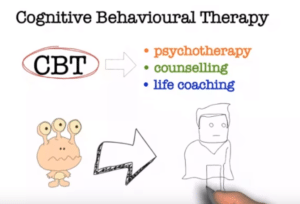What are behavioural and cognitive therapies?
Behavioural and Cognitive Psychotherapies are psychological approaches which are based on scientific principles and which research has shown to be effective for a wide range of problems. Clients and therapists work together to identify and understand problems in terms of the relationship between thoughts, feelings and behaviour. The approach usually focuses on difficulties in the here and now, and relies on the therapist and client developing a shared view of the individual’s problem. This then leads to the identification of personalised, time-limited therapy goals and strategies which are continually monitored and evaluated. Behavioural and Cognitive Psychotherapists work with individuals, families and groups. The approaches can be used to help anyone irrespective of ability, culture, race, gender or sexual preference.
Behavioural and Cognitive Psychotherapists are usually health professionals such as nurses, psychologists, doctors, social workers, counsellors etc. Whilst all behavioural and cognitive psychotherapists share the above principles, individual therapists may call themselves Cognitive Psychotherapists, Behavioural Psychotherapists, Cognitive Behavioural Psychotherapists or Rational Emotive Behaviour Therapists. These different titles often reflect the preference and training of individual therapists for specific techniques which address problematic thoughts, assumptions and beliefs directly (Cognitive Psychotherapists), address behaviour directly (Behavioural Psychotherapists) or a combination of techniques aimed at addressing thoughts and behaviour (Cognitive Behavioural Psychotherapists, Rational Emotive Behaviour Therapists). Whatever title they use, the approach is commonly referred to as CBT. Most importantly, all therapists aim to help clients achieve desired change in the way they think, feel and behave.
Here is an example of how our thoughts, feelings and behaviour can affect us:
‘Sue was nearly asleep and by the time she managed to pick up the phone it had stopped ringing. She had been suffering from anxiety and depression for some time. Her daughter Liz, who had recently moved to London, immediately came to mind. Sue thought: “Something must have happened to Liz! That was the police calling to inform me that Liz has had a serious accident.” She felt her stomach churning and her heart pounding at the thought that something could have happened to Liz. Her thoughts raced uncontrollably and she feared she could be losing her mind. She rang Liz’s home number several times but there was no reply. Sue took this as further evidence that something bad had happened to Liz. Sue felt so panicky that she stayed up all night, despite taking extra medication. She felt dreadful thinking of all the things that could have happened and even thought of ringing some of the London hospitals. Sue found out from Liz the next morning that she had stayed the night at one of her friends’ houses and was fine. Nevertheless, she remained distressed and unsettled and felt unable to go to work.’

